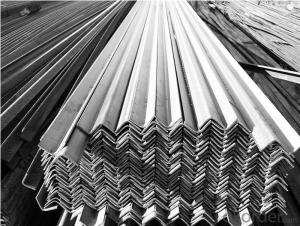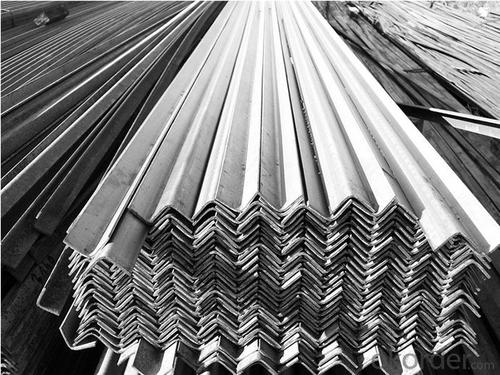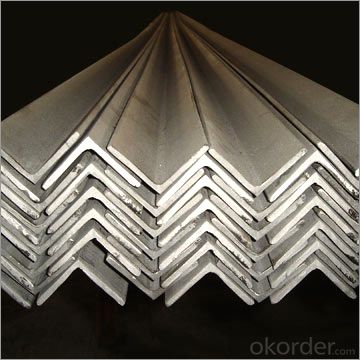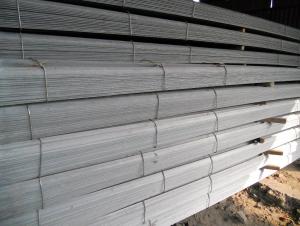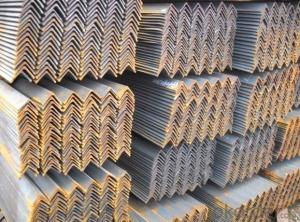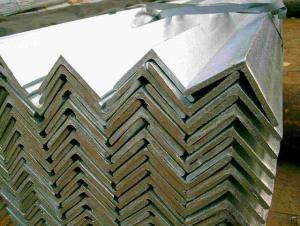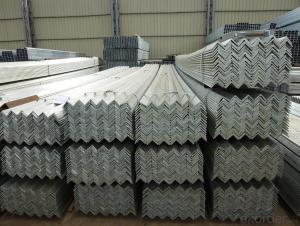30mm*6mm hot sell Equal Angle for construction
- Loading Port:
- Tianjin
- Payment Terms:
- TT OR LC
- Min Order Qty:
- 25 m.t.
- Supply Capability:
- 10000 m.t./month
OKorder Service Pledge
OKorder Financial Service
You Might Also Like
Product Description:
Specifications of Angle Steel
1. Invoicing on theoretical weight or actual weight as customer request
2. Length: 6m, 9m, 12m as following table
3. Sizes

Sizes: 25mm-250mm | ||
a*t | ||
25*2.5-4.0 | 70*6.0-9.0 | 130*9.0-15 |
30*2.5-6.6 | 75*6.0-9.0 | 140*10-14 |
36*3.0-5.0 | 80*5.0-10 | 150*10-20 |
38*2.3-6.0 | 90*7.0-10 | 160*10-16 |
40*3.0-5.0 | 100*6.0-12 | 175*12-15 |
45*4.0-6.0 | 110*8.0-10 | 180*12-18 |
50*4.0-6.0 | 120*6.0-15 | 200*14-25 |
60*4.0-8.0 | 125*8.0-14 | 250*25 |
5. Payment terms:
1).100% irrevocable L/C at sight.
2).30% T/T prepaid and the balance against the copy of B/L.
3).30% T/T prepaid and the balance against L/C
6.Material details:
Alloy No | Grade | Element (%) | |||||
C | Mn | S | P | Si | |||
|
|
|
|
|
|
| |
Q235 | B | 0.12—0.20 | 0.3—0.7 | ≤0.045 | ≤0.045 | ≤0.3 | |
|
|
|
|
|
|
| |
Alloy No | Grade | Yielding strength point( Mpa) | |||||
Thickness (mm) | |||||||
≤16 | >16--40 | >40--60 | >60--100 | ||||
≥ | |||||||
|
|
|
|
|
| ||
Q235 | B | 235 | 225 | 215 | 205 | ||
Alloy No | Grade | Tensile strength (Mpa) | Elongation after fracture (%) | ||||
Thickness (mm) | |||||||
| ≤16 | >16--40 | >40--60 | >60--100 | |||
≥ | |||||||
|
|
|
|
|
|
| |
Q235 | B | 375--500 | 26 | 25 | 24 | 23 | |
Usage & Applications of Angle Steel
According to the needs of different structures, Angle can compose to different force support component, and also can be the connections between components. It is widely used in various building structures and engineering structures such as roof beams, bridges, transmission towers, hoisting machinery and transport machinery, ships, industrial furnaces, reaction tower, container frame and warehouse etc.
Packaging & Delivery of Angle Steel
1. Packing: it is nude packed in bundles by steel wire rod
2. Bundle weight: not more than 3.5MT for bulk vessel; less than 3 MT for container load
3. Marks:
Color marking: There will be color marking on both end of the bundle for the cargo delivered by bulk vessel. That makes it easily to distinguish at the destination port.
Tag mark: there will be tag mark tied up on the bundles. The information usually including supplier logo and name, product name, made in China, shipping marks and other information request by the customer.
If loading by container the marking is not needed, but we will prepare it as customer request.
Production flow of Angle Steel
Material prepare (billet) —heat up—rough rolling—precision rolling—cooling—packing—storage and transportation
Packaging & Delivery of Equal Angle
1. Transportation: the goods are delivered by truck from mill to loading port, the maximum quantity can be loaded is around 40MTs by each truck. If the order quantity cannot reach the full truck loaded, the transportation cost per ton will be little higher than full load.
2. With bundles and load in 20 feet/40 feet container, or by bulk cargo, also we could do as customer's request.
3. Marks:
Color mark: There will be color marking on both end of the bundle for the cargo delivered by bulk vessel. That makes it easily to distinguish at the destination port.
Tag mark: There will be tag mark tied up on the bundles. The information usually including supplier logo and name, product name, made in China, shipping marks and other information request by the customer.
If loading by container the marking is not needed, but we will prepare it as customer request.
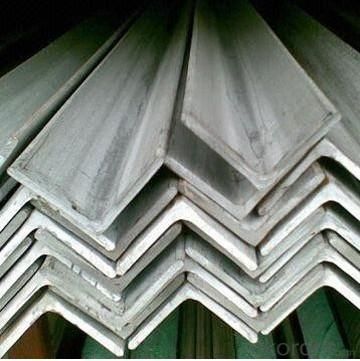
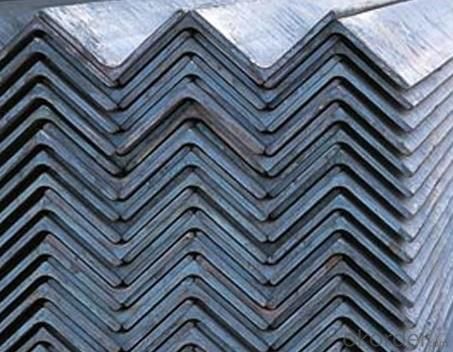

- Q: Can steel angles be used in residential construction?
- Yes, steel angles can be used in residential construction. Steel angles are commonly used as structural elements in residential buildings for various applications, such as supporting roof trusses, reinforcing walls, framing doorways, and constructing balconies. They provide strength, durability, and stability to the structure, making them a suitable choice for residential construction projects.
- Q: How do you specify steel angles in drawings?
- To properly describe steel angles in drawings, it is necessary to specify several crucial factors. First and foremost, the dimensions of the angle must be clearly indicated. This can be achieved by specifying the lengths of the legs or the dimensions of the equal sides. For instance, an angle measuring 3 inches by 3 inches with a thickness of 1/4 inch would be denoted as a 3" x 3" x 1/4" angle. The type of angle should also be specified, whether it is L-shaped or unequal. This information is vital in determining the most suitable steel angle for a particular application. Furthermore, it is essential to indicate the grade of the steel angle. Steel angles are available in various grades, each possessing different levels of strength and durability. Common grades include A36, A572, and A588, among others. The grade is typically specified to ensure that the angle meets the required structural or mechanical properties. The length of the steel angle is another significant parameter that must be stated in the drawing. Whether it is a fixed length or a specific range, this information facilitates accurate fabrication and installation. Lastly, any additional requirements or specifications, such as surface finish, tolerance, or specific treatments or coatings, should be clearly stated in the drawing. This ensures that the steel angle is manufactured and installed according to the desired specifications. By including these parameters in the drawings, engineers, fabricators, and contractors can easily identify and procure the necessary steel angles for construction or manufacturing purposes with precision.
- Q: What is the typical tolerance for steel angles?
- The typical tolerance for steel angles depends on various factors such as the manufacturing process, standardized specifications, and the intended application. Generally, the typical tolerance for steel angles is within a range of ±1/8 to ±1/4 inch, or ±3 to ±6 millimeters, for dimensions such as length, width, and thickness. However, it is important to consult specific industry standards or the manufacturer's specifications for accurate information on the tolerance of steel angles.
- Q: What are the different types of steel angles connections for roof trusses?
- There are several types of steel angle connections commonly used for roof trusses, including gusset plate connections, bolted connections, welded connections, and clip angle connections. These connections are designed to provide stability and strength to the truss system, ensuring the overall integrity and safety of the roof structure.
- Q: Can steel angles be used in the construction of pipe racks?
- Yes, steel angles can be used in the construction of pipe racks. Steel angles provide structural support and stability to pipe racks, making them an ideal choice for this type of construction. The angles can be used to create a framework or framework support system for the pipe rack, ensuring that it is strong and able to withstand the weight and pressure of the pipes. Additionally, steel angles are durable and resistant to corrosion, which is important in an environment where pipes may be exposed to various elements. Overall, steel angles are a suitable and commonly used material in the construction of pipe racks.
- Q: Are steel angles heat-treated?
- Steel angles are indeed capable of undergoing heat treatment. To modify the physical and mechanical properties of the steel, controlled heating and cooling processes are employed in heat treatment. This can yield various desirable attributes, such as enhanced strength, hardness, toughness, or improved machinability. When it comes to heat treating steel angles, commonly employed techniques include annealing, quenching, tempering, or normalizing. The selection of a specific heat treatment method is contingent upon the desired final properties and the intended application of the steel angles.
- Q: Do steel angles come with any warranties?
- Yes, steel angles typically come with warranties. The specific warranty terms may vary depending on the manufacturer or supplier. However, most reputable companies offer warranties to ensure the quality and performance of their steel angles. These warranties typically cover defects in materials or workmanship and may range from a few months to several years. It is advisable to check the warranty terms and conditions provided by the manufacturer or supplier before purchasing steel angles to understand the extent and duration of the warranty coverage.
- Q: What are the load-bearing capacities of steel angles?
- The load-bearing capacities of steel angles vary depending on factors such as the size and thickness of the angle, the type of steel used, and the specific design and construction requirements. It is important to refer to engineering specifications, codes, and standards to determine the load-bearing capacities of steel angles for a particular application.
- Q: What are the different methods of surface preparation for steel angles?
- Some of the different methods of surface preparation for steel angles include abrasive blasting, chemical cleaning, and mechanical cleaning. Abrasive blasting involves using a high-pressure stream of abrasive material to remove rust, scale, and other contaminants from the surface of the steel. Chemical cleaning involves using chemicals to dissolve and remove rust and other contaminants. Mechanical cleaning involves using tools such as wire brushes or sandpaper to physically scrape or scrub the surface of the steel to remove rust and other contaminants. These methods are important in preparing the steel surface for painting, coating, or other forms of protection against corrosion.
- Q: How do you determine the required thickness of a steel angle for a specific application?
- In order to calculate the necessary thickness of a steel angle for a particular use, several factors must be taken into account. Firstly, it is crucial to establish the load or weight that will be applied to the steel angle. This includes both the dead load (the weight of the angle itself) and any live loads (external forces or loads placed on the angle). Next, the span or distance between supports needs to be determined. The greater the span, the greater the bending moment and deflection that the steel angle will experience. Once the load and span are known, it becomes necessary to compute the maximum allowable stress or bending moment that the steel angle can endure. This is usually done using engineering formulas or structural analysis software. The maximum allowable stress is determined based on the yield strength of the steel and safety factors. By utilizing the maximum allowable stress and the bending moment, the required section modulus of the steel angle can be calculated. The section modulus measures the angle's resistance to bending and is directly related to its thickness. Lastly, the necessary thickness of the steel angle can be determined by selecting a standard angle size that has a section modulus equal to or greater than the calculated value. It is important to note that other considerations, such as corrosion protection, fire resistance, and aesthetics, may also impact the choice of steel angle thickness. Therefore, it is highly recommended to consult structural engineers or adhere to relevant building codes and standards to ensure the safety and performance of the steel angle in a specific application.
Send your message to us
30mm*6mm hot sell Equal Angle for construction
- Loading Port:
- Tianjin
- Payment Terms:
- TT OR LC
- Min Order Qty:
- 25 m.t.
- Supply Capability:
- 10000 m.t./month
OKorder Service Pledge
OKorder Financial Service
Similar products
Hot products
Hot Searches
Related keywords
